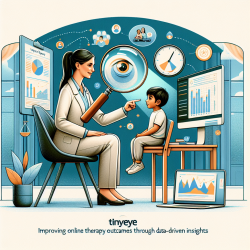As a dedicated speech-language pathologist, you understand the transformative power of early intervention. But did you know that the benefits of such interventions can extend well into adulthood? A recent study titled A Multicomponent, Preschool to Third Grade Preventive Intervention and Educational Attainment at 35 Years of Age sheds light on the long-term educational outcomes of early childhood programs. This research underscores the importance of implementing comprehensive early interventions to enhance educational attainment and life outcomes for children.
Conducted by Reynolds, Ou, and Temple, the study followed 1,398 economically disadvantaged children from preschool to third grade and tracked their educational achievements up to 35 years of age. The findings are compelling: children who participated in a multicomponent intervention program had significantly higher rates of educational attainment compared to those who did not.
Here are some key takeaways from the study:
- Children who participated in the intervention for 4 to 6 years had a 48% higher rate of degree completion (associate’s degree or higher) compared to those with lesser participation.
- Preschool participation was independently associated with most educational outcomes, including years of education, with greater benefits for children whose mothers were high school dropouts.
- The program showed robust benefits across various demographics, favoring male participants for high school graduation and female participants for college attainment.
These findings highlight the critical role that early and sustained intervention can play in shaping a child's future. As practitioners, it's essential to leverage this data to advocate for and implement comprehensive early childhood programs. Here’s how you can apply these insights in your practice:
1. Advocate for Comprehensive Early Childhood Programs
Encourage schools and policymakers to invest in multicomponent early childhood programs that offer educational enrichment, family support, and comprehensive services from preschool to third grade. These programs have been shown to yield significant long-term benefits, particularly for economically disadvantaged children.
2. Tailor Interventions to High-Risk Groups
The study found that children from lower-educated households and those with higher initial risks benefited the most from the intervention. Tailoring your approach to address the unique needs of these high-risk groups can maximize the impact of your interventions.
3. Promote Continuity and Duration of Services
Longer durations of participation in early childhood programs were linked to higher educational attainment. Advocate for programs that provide continuous support from preschool through at least third grade to ensure children receive sustained benefits.
4. Collaborate with Families
Family involvement is a cornerstone of successful early interventions. Work closely with families to support their engagement in their child's education and provide resources to help them navigate the educational system.
5. Stay Informed and Conduct Further Research
Continuously update your knowledge base with the latest research and findings in early childhood education. Conducting further research in your own practice can help tailor interventions to better meet the needs of your clients and contribute to the broader field of speech-language pathology.
By integrating these evidence-based strategies into your practice, you can help unlock the full potential of the children you serve, setting them on a path to long-term educational and life success.
To read the original research paper, please follow this link: A Multicomponent, Preschool to Third Grade Preventive Intervention and Educational Attainment at 35 Years of Age.










